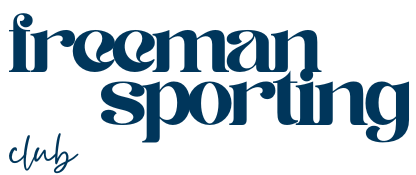In a world where avocado toast and fancy coffee seem to drain wallets faster than a leaky faucet, having a solid savings plan is like finding a golden ticket in a chocolate bar. It’s not just about stashing cash away; it’s about securing a future where impulse buys don’t haunt your dreams. Imagine a life where you can splurge on that dream vacation without the guilt of emptying your bank account.
Table of Contents
ToggleUnderstanding Savings Plans
Savings plans provide individuals with the structure to set aside funds for future needs and goals. By utilizing a savings plan, individuals can effectively manage their finances and work toward financial security.
What is a Savings Plan?
A savings plan is a strategy designed for accumulating funds over time. It involves identifying goals, setting a timeline, and determining how much to save regularly. This plan helps individuals prioritize their financial objectives while ensuring that they don’t overspend on everyday luxuries. Establishing a clear savings plan aids in avoiding unnecessary debt and provides peace of mind during economic uncertainties.
Types of Savings Plans
Numerous types of savings plans exist to cater to various financial needs. Regular savings accounts provide easy access and liquidity while earning minimal interest. High-yield savings accounts often offer better interest rates, maximizing earnings on deposits. Certificates of deposit (CDs) lock money for a fixed period and generally yield higher returns. Additionally, specialized plans like health savings accounts (HSAs) allow users to save for medical expenses tax-free. Each savings plan type serves distinct purposes, making it essential to choose one that aligns with individual financial goals.
Benefits of a Savings Plan

A savings plan offers numerous advantages that enhance financial well-being. Two key benefits include financial security and goal achievement.
Financial Security
Financial security arises from having a savings plan. Individuals experience peace of mind knowing they can cover emergencies or unexpected expenses. Specific funds set aside create a safety net, reducing the stress associated with financial uncertainties. Moreover, a well-structured savings plan encourages disciplined saving habits, fostering a stronger financial foundation. Responsible saving habits enable individuals to manage their expenses better and reduce the reliance on credit. Consequently, it leads to improved credit scores and healthier financial profiles.
Goal Achievement
Saving money becomes easier with a savings plan in place. Individuals define their objectives, making it clear what they want to achieve financially. For instance, purchasing a home, funding education, or planning a vacation become attainable goals. With regular contributions, progress can be tracked, maintaining motivation toward these milestones. Regularly reviewing and adjusting the plan aligns with changing priorities or goals, ensuring it remains relevant. This structured approach not only streamlines the path to achieving financial targets, but it also highlights the importance of commitment to saving.
How to Create an Effective Savings Plan
Creating an effective savings plan requires clear objectives and the right financial tools. Individuals should first understand their priorities for effective execution.
Setting Savings Goals
Setting savings goals acts as the foundation for a successful savings plan. Specific targets like purchasing a home or funding education guide financial decisions. Time-bound goals motivate individuals to save consistently. For example, aiming to save $20,000 for a home in five years requires setting aside approximately $333 monthly. Regularly reviewing and adjusting goals keeps individuals focused and accountable. Each adjustment ensures alignment with changing priorities or unexpected expenses.
Choosing the Right Accounts
Choosing the right accounts plays a crucial role in maximizing savings. Options include regular savings accounts, high-yield savings accounts, and certificates of deposit. Regular savings accounts offer immediate access to funds, while high-yield savings accounts provide better interest rates, making them ideal for longer-term savings. Certificates of deposit lock in funds for fixed terms but often yield higher returns. Health savings accounts cater to medical expenses and feature tax advantages. Evaluating needs ensures the selection of accounts that align with financial goals.
Common Mistakes to Avoid
Missteps in planning can derail savings goals. Awareness of common pitfalls helps individuals maintain focus and achieve financial success.
Underestimating Expenses
Many people overlook daily expenditures when creating a savings plan. Frequent, small purchases like coffee or lunch add up quickly, impacting overall savings. Evaluating monthly and yearly spending can reveal surprising figures. For instance, someone might spend $10 daily on lunch, totaling about $2,600 annually. This amount can significantly affect savings goals, making it essential to track all expenses carefully. Individuals should factor in irregular costs, such as car maintenance or medical bills, during budgeting. A comprehensive view of expenses ensures more accurate savings targets.
Lack of Monitoring
Regularly monitoring progress is crucial for any savings plan. Without consistent tracking, it’s easy to stray from established goals or miss adjustments. Individuals might intend to save $300 a month but forget about their plan as expenses arise. Monthly reviews can highlight trends, allowing for timely changes. For example, if a savings goal isn’t being met, re-evaluating spending habits or increasing the savings amount may be necessary. Utilizing budgeting apps or spreadsheets makes monitoring straightforward. Tracking finances instills accountability and keeps individuals aligned with their financial objectives.
Conclusion
A well-structured savings plan is essential for achieving financial stability and peace of mind. By setting clear goals and regularly monitoring progress individuals can navigate their financial journey with confidence. This structured approach not only helps in managing everyday expenses but also paves the way for fulfilling larger aspirations like home ownership or education funding. Choosing the right savings tools can further enhance the effectiveness of a savings plan. With commitment and discipline anyone can transform their financial future and enjoy the luxuries life has to offer without guilt.




